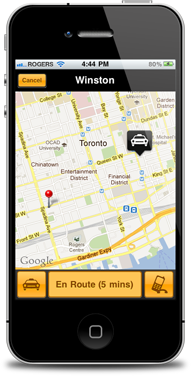he word “green” is tossed around a lot as a catchall term to describe sustainable or environmentally friendly projects, businesses, energy, and more. Green construction and architecture, for one, are proliferating across the world, but when it comes to gauging how “green” a building is, for example, one finds that there are more than a few standards by which to determine its efficiency and sustainability.
Enter Toronto-based Zerofootprint: A cleantech software and services company, which is leveraging competitive benchmarking between peers to help determine the “green” factor for any given building. Ron Dembo, the founder of Zerofootprint, contends that, if you want to motivate developers to improve the efficiency of a building, one can’t simply benchmark against everyone else, because each community has a different climate. Thus, the founder says that Zerofootprint aims to focus on benchmarking buildings against other buildings within a community to achieve maximum community efficiency.
Zerofootprint uses its mapping and analytics engine to correlate multiple consumption and usage data points, like power usage, costs, emissions, etc., that it then plots on an interactive map for easy viewing. Currently, the company is working with over 100 customers that include entities like school boards and municipalities, and is leveraging its data in school districts to drive change at a school-by-school level.
By tracking power usage at this local level, Zerofootprint is quickly able to see which schools are using higher amounts of power and thus incurring a higher cost. Through some quick analysis, it’s able to track and see that a school board may be paying $2,500 per child in electricity vs. $800 in another school, for example.
Some of these differences can be traced to age of the building, but another key component is behavior. By sharing this information with key stakeholders (including students, teachers, parents and administrators), the schools can then work to reduce energy costs. It is the hope that by reducing energy costs, school districts can focus on using those funds towards education instead of just keeping the lights on.
According to Dembo, through realtime feedback with its system, Zerofootprint has already been able to help certain schools achieve 20 percent energy reduction. He also says that it’s been interesting to see the reaction from stakeholders for installations that have not even taken root. Zerofootprint has recently deployed their solution with the Halton Catholic District School board.
“Even in the early stages of this initiative, teachers and principals are excited about using the
Zerofootprint tool to engage students and encourage behavioral change when it comes to energy use in our schools. Our Board looks forward to using this tool to track carbon emissions and strive to continuously improve energy conservation”, says Erin Holko, Environmental Sustainability Officer of the Halton Catholic District School Board.
Time will tell as to what the ultimate impact will be of actively monitoring power usage, but it is clear that they are getting traction from multiple levels of stakeholders. The key will be to see how this translates both in different regions and in both government and the private sector.
As to cost, the minimum for a Zerofootprint installation is $25,000, which pays for the analytics and dashboard that help track the progress within the organization. For many companies with ever growing energy costs, this can help properly identify where the issues are and address them.
While school boards have been a key client, this is the tip of the iceberg as to who Zerofootprint wants to reach with this technology. The hope is that by empowering multiple stakeholders with information, it will act as a catalyst to spur behaviour change in many sectors and industries. This will not only change how people use power but how people use buildings. With a clearer understanding and correlation of these factors, it hopes to enable administrators to make clearer decisions.
Zerofootprint has been challenged lately by competition from a new company in the space calledOPower. But Dembo maintains that it has an edge over OPower, as it has begun to partner with banks to give special financial benefits to those who reduce their eco footprint. In any case, the entrance of OPower into the market is helping to draw more attention to both their offerings, indicating that there is room to grow, as the race to connect the dots between behavior and energy patterns is just beginning.
The key going forward will be not just the creation of linkages, but identifying which systems truly spur a ground-level change in behavior. Zerofootprint’s key differentiator will be tying performance to financial incentives. Zerofootprint has been courting banks and financial institutions to give preferential rates and products to organizations that become greener. If there were more incentives to operate in a more energy efficient manner, this could be a game changer for green initiatives. By involving real financial incentives, it is more likely to take hold in the mainstream rather than just with those who pursue green initiatives for altruistic purposes.
It is clear that information is the first step to making a decision. Zerofootprint hopes that once information is put in the hands of multiple people, innovation will occur and people will formulate their own solutions to increase energy efficiency.
Originally Published at on TechCrunch
[retweet] [facebook]
